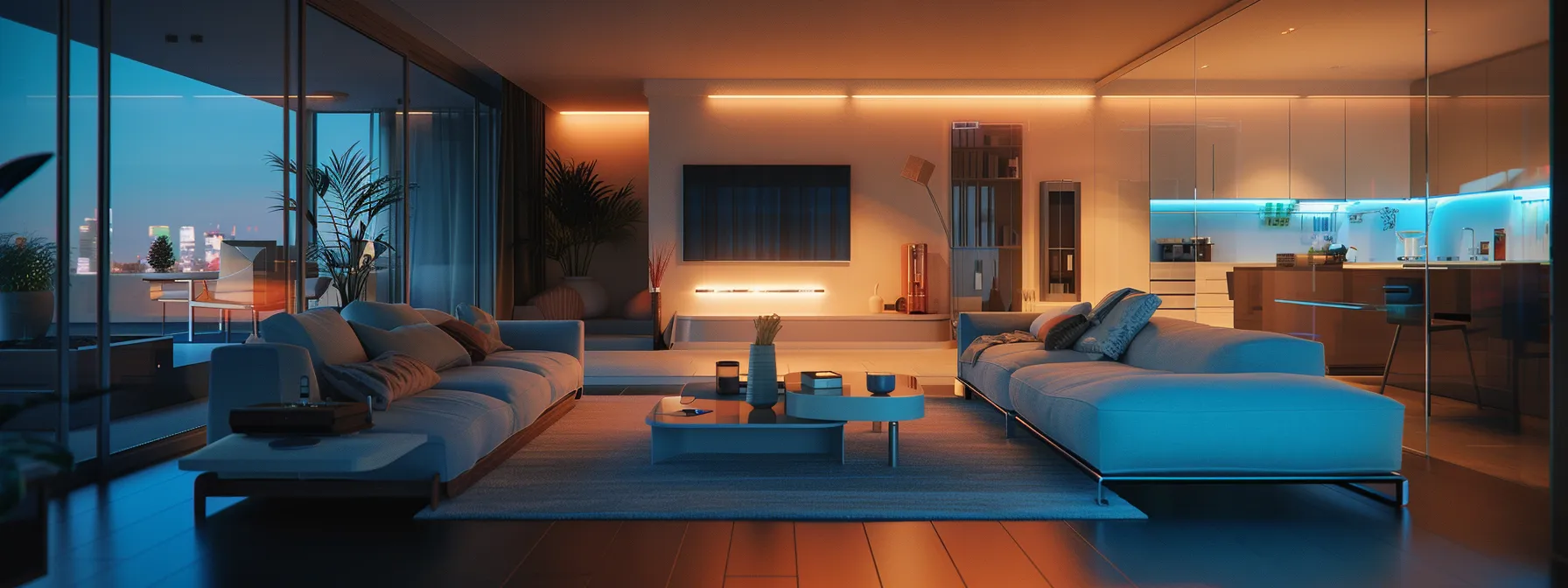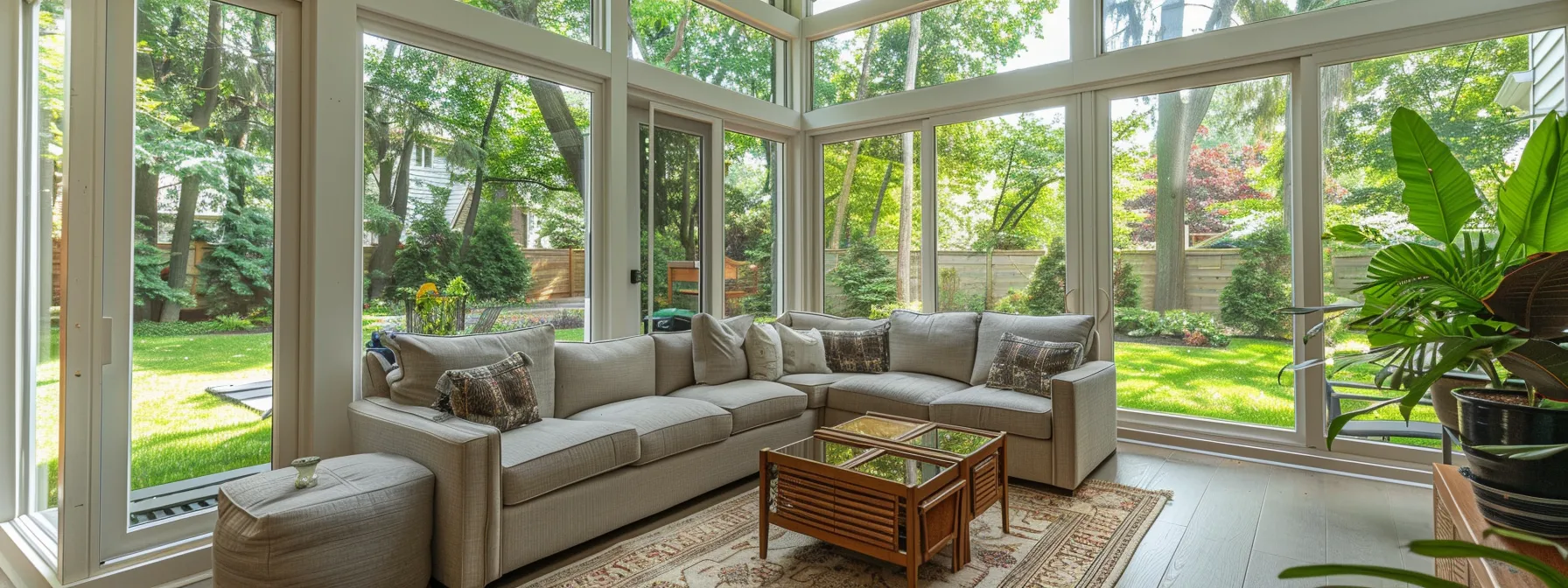If you’re considering adding more space to your home, it’s essential to understand the costs involved. Home additions can vary greatly in price depending on various factors, such as the type of addition, materials used, and labor costs. In this comprehensive guide, we will break down everything you need to know about the cost of home additions, from understanding the basics to financing and saving money on your project.
Understanding the Basics of Home Additions
Before delving into the cost specifics, it’s crucial to have a solid understanding of the basics. Home additions are an excellent way to expand your living space and accommodate changing needs. They can include adding extra rooms, expanding existing rooms, or even building a separate structure on your property. By adding square footage to your home, you create more livable space and increase its value.
When considering a home addition, it’s essential to take into account your family’s current and future needs. Are you expecting a new addition to the family? Do you require a dedicated space for a home office or a hobby room? Understanding your specific requirements will help you make informed decisions during the planning process.
Home additions offer numerous benefits beyond additional space. They provide an opportunity to enhance the functionality and aesthetics of your home. You can customize the design to match your style preferences and create a seamless integration with the existing structure.
Types of Home Additions
There are various types of home additions to consider, each with its unique characteristics and costs. Some common examples include:
- Room additions: This involves adding an entirely new room to your home, such as a bedroom, bathroom, or home office. Room additions provide the flexibility to create dedicated spaces tailored to your specific needs. Whether it’s a serene master suite, a spacious playroom for the kids, or a functional home gym, room additions can transform your living experience.
- Garage conversions: If you have an attached or detached garage, converting it into a livable space can be a cost-effective option. Garage conversions offer a versatile solution, allowing you to repurpose the existing structure and save on construction costs. Whether you envision a cozy guest suite, a home theater, or a creative studio, a garage conversion can provide the extra space you need.
- Second-story additions: This involves building a new floor on top of your existing home, which can be an excellent solution if you lack horizontal space. Second-story additions not only expand your living area but also offer the opportunity to enjoy breathtaking views and maximize natural light. Whether you desire additional bedrooms, a private retreat, or a spacious entertainment area, a second-story addition can elevate your home to new heights.
- Sunroom or conservatory additions: These allow you to bring the outdoors in and enjoy natural light throughout the year. Sunrooms and conservatories are versatile spaces that can serve as a tranquil oasis, a vibrant garden room, or a cozy reading nook. With their expansive windows and panoramic views, these additions create a seamless connection with nature and provide a serene escape within the comfort of your home.
When deciding on the type of home addition, it’s essential to consider factors such as your budget, available space, and architectural compatibility with the existing structure. Consulting with a professional contractor or architect can help you explore the possibilities and make an informed decision.
Factors Influencing the Cost of Home Additions
Several factors can significantly impact the overall cost of your home addition:
- Size and complexity of the addition: The larger and more intricate the addition, the higher the construction costs. Factors such as the number of rooms, the inclusion of plumbing or electrical work, and the complexity of the design can all affect the overall cost.
- Materials used, such as flooring, roofing, windows, and fixtures: The choice of materials can vary significantly in terms of quality and cost. Opting for high-end materials will increase the overall cost, while more budget-friendly options can help keep expenses in check.
- Location and accessibility of your property: Factors such as the availability of utilities, site conditions, and local building codes can influence construction costs. Properties with challenging terrain or limited access may require additional resources and labor, impacting the overall budget.
- Permitting and inspection fees: Obtaining the necessary permits and undergoing inspections is a crucial part of any home addition project. These fees can vary depending on your location and the scope of the project.
- Additional infrastructure requirements, like plumbing and electrical work: If your home addition involves the installation of new plumbing or electrical systems, the cost will increase accordingly. It’s essential to consult with professionals to ensure compliance with building codes and to avoid any potential issues down the line.
- Architectural and design services: Hiring an architect or designer can add to the overall cost but can also ensure a well-planned and aesthetically pleasing addition. Their expertise can help optimize the use of space, enhance functionality, and create a cohesive design that seamlessly integrates with your existing home.
- Any necessary demolitions or site preparations: Depending on the scope of your home addition, there may be a need for demolitions or site preparations. These activities can involve removing existing structures, clearing the land, or making necessary adjustments to accommodate the new addition.
It’s important to consider all these factors when budgeting for your home addition project to ensure you have a realistic estimate of the total cost involved. Consulting with professionals and obtaining multiple quotes will help you make informed decisions and ensure that your home addition project stays within your desired budget.
Planning Your Home Addition
Once you have a good understanding of the basics and factors influencing the cost, it’s time to start planning your home addition project.
Planning a home addition involves careful consideration of various aspects to ensure a successful and cost-effective project. From setting a budget to deciding whether to hire professionals or take on a DIY approach, each step plays a crucial role in the overall outcome.
Setting a Budget for Your Home Addition
One of the first steps in planning is setting a budget for your home addition. Consider the total amount you’re willing to spend and allocate it to different elements of the project. This budget should factor in materials, labor, permits, design services, and any unexpected costs that may arise during construction.
It’s always a good idea to set aside some contingency funds for unforeseen expenses, such as structural issues discovered during the construction process or design changes you wish to make along the way. These additional funds can provide peace of mind and ensure that your project stays on track even in the face of unexpected challenges.
Hiring Professionals vs DIY Home Additions
Deciding whether to hire professionals or take on a DIY approach is an important consideration that can impact costs and project outcomes.
If your home addition requires intricate design work, structural modifications, or specialized skills, hiring professionals such as architects, contractors, and electricians may be necessary. While it may cost more upfront, their expertise and experience can save you money in the long run by ensuring the project is done efficiently and up to code.
On the other hand, if you have the necessary skills, time, and resources, you may consider taking a DIY approach to save on labor costs. However, it’s essential to be realistic about your capabilities and understand that mistakes or improper installation can lead to higher expenses in the future.
Before embarking on a DIY home addition, it’s crucial to thoroughly research the necessary permits and regulations in your area. Familiarize yourself with building codes, safety requirements, and any restrictions that may apply to your project. This knowledge will help you avoid costly mistakes and ensure that your addition complies with all legal and safety standards.
Additionally, consider the time commitment required for a DIY project. Home additions can be complex and time-consuming, requiring a significant investment of your time and energy. If you have a busy schedule or limited availability, it may be more practical to hire professionals who can dedicate their full attention to the project.
Ultimately, the decision between hiring professionals and taking a DIY approach depends on your specific circumstances, budget, and comfort level with construction projects. It’s important to weigh the pros and cons carefully and make an informed choice that aligns with your goals and resources.
Cost Breakdown of Home Additions
Understanding the cost breakdown of home additions can help you effectively allocate your budget and make informed decisions about where to invest your money.
When it comes to home additions, there are several factors that contribute to the overall cost. In addition to the materials used and labor costs, there are other considerations that can impact the final price.
Material Costs for Home Additions
The materials you choose for your home addition can significantly impact the overall cost. High-end finishes and fixtures will naturally be more expensive than budget-friendly alternatives. It’s essential to balance quality with affordability based on your budget and aesthetic preferences.
For example, if you’re considering adding a new bathroom to your home, the cost of materials such as flooring, roofing, windows, doors, and plumbing fixtures can vary greatly depending on the brands and styles you choose. Researching and comparing prices for these materials can ensure you get the best value for your money.
Additionally, it’s important to consider the long-term durability and maintenance requirements of the materials you select. While cheaper options may save you money upfront, they may require more frequent repairs or replacements in the future, which can add to the overall cost in the long run.
Labor Costs for Home Additions
Labor costs can vary depending on the complexity of your project and the professionals you hire. General contractors typically charge a percentage of the total project cost or a fixed fee. Other specialized contractors, such as plumbers and electricians, may charge hourly rates or provide a quote for their specific services.
When it comes to hiring contractors, it’s crucial to obtain multiple quotes and thoroughly vet potential candidates. This allows you to compare prices and evaluate the quality of their work. Keep in mind that the lowest bid may not always be the best option, as it could indicate subpar craftsmanship or the use of lower-quality materials.
Working with experienced and reputable contractors can help ensure that your home addition is completed to a high standard, minimizing the risk of costly mistakes or delays. It’s also worth considering the potential for additional expenses, such as permits and inspections, which may be required depending on the scope of your project.
By carefully considering the material and labor costs associated with home additions, you can make informed decisions that align with your budget and goals. Remember to prioritize quality, durability, and the long-term value of your investment to create a space that enhances your home and lifestyle.
Financing Your Home Addition
Unless you have sufficient savings to cover the entire cost of your home addition, you’ll likely need to explore financing options. Here are two common options to consider:
Home Improvement Loans
Home improvement loans, such as personal loans or home equity loans, can provide the necessary funds to finance your home addition. These loans typically offer lower interest rates than credit cards, and you can repay them over an extended period.
It’s essential to research different loan providers and compare their rates, terms, and repayment options to find the best fit for your financial situation.
Home Equity Lines of Credit
A home equity line of credit (HELOC) allows you to borrow against the equity you have in your home. This can be an excellent option if you have substantial equity built up and want flexible access to funds. HELOCs typically have variable interest rates, and the repayment terms may vary as well.
As with any financial decision, it’s crucial to carefully consider the terms and consult with a financial advisor if needed.
Saving Money on Your Home Addition
While home additions can be a significant investment, there are ways to save money without compromising on quality:
Tips for Cost-Effective Home Additions
Research and plan extensively before starting your project to avoid costly changes along the way. Consider consulting with professionals and obtaining multiple quotes to ensure you receive competitive pricing.
Reuse and repurpose materials when possible to reduce costs. Salvaged items or gently used fixtures can often be found at a fraction of the price of new ones.
Consider energy-efficient options for windows, insulation, and appliances. While they may have a higher upfront cost, they can lead to long-term savings on utility bills.
Avoiding Common Costly Mistakes
Common mistakes can lead to unnecessary expenses and project delays. Ensure you have all the necessary permits and inspections in place before starting construction. Failure to comply with building codes and regulations can result in costly fines and the need to redo work.
Additionally, carefully review contracts and communicate clearly with your contractors to avoid misunderstandings that could lead to costly change orders.
By understanding the basics, carefully planning and budgeting, exploring financing options, and implementing cost-saving strategies, you can navigate the cost of home additions effectively. Use this comprehensive guide as a roadmap to ensure a successful and financially sound home addition project.
Ready to Start Your Home Addition Project?
At domilya GROUP Construction, we understand that your home is more than just a space—it’s where your life unfolds. Our dedicated team is here to bring your renovation dreams to life with responsive service and unparalleled craftsmanship. With our commitment to professionalism, integrity, and customer satisfaction, we’ll ensure your home addition is a seamless and rewarding experience. Contact us for a quote today, and let’s transform your aspirations into reality.




